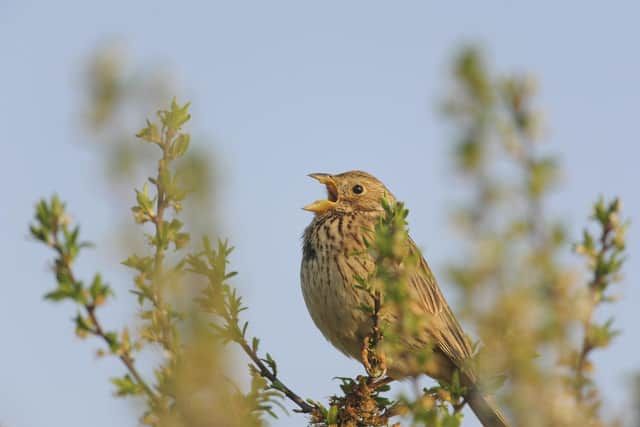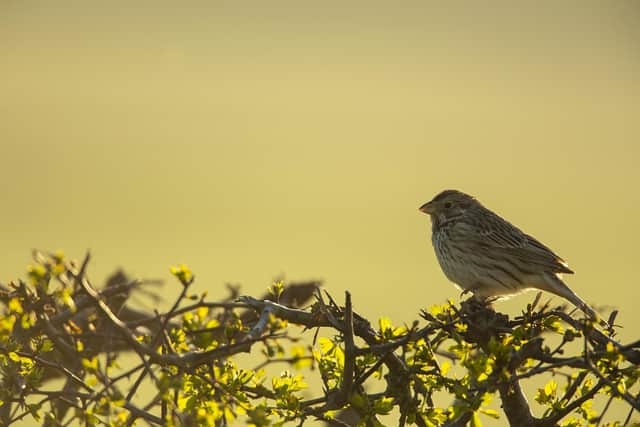Fife helps to improve fortunes of one of Scotland’s fastest declining birds
and live on Freeview channel 276
The numbers of corn buntings are up in the Kingdom - one of their last strongholds in Scotland.
Advertisement
Hide AdAdvertisement
Hide AdIt revealed another record increase in corn bunting numbers in the region. Numbers went up by 70% between 2014 and 2019, followed by another increase of 29% since 2020.


There are now approximately 372 Fife corn bunting territories which means that numbers have more than tripled since their lowest point in 2001.
Huge efforts have been made by many farmers to manage their land in a way to benefit corn buntings the most, and RSPB Scotland has praised the dedication, passion and commitment of all those involved in the Corn Bunting Recovery Project
Yvonne Stephan, conservation advisor for the organisation, said: “Even after so many years, it’s amazing to see local farmers and landowners doing their best to help corn buntings.
Advertisement
Hide AdAdvertisement
Hide Ad“It’s heart-warming to see just how much effort has gone into bringing this little bird back from the brink, and how successful the management on participating farms has been.


“Assessing corn bunting numbers every year is a real joy as it reminds us of how many more chicks they have managed to raise successfully, and how many more adults are now making it through the winter.”
Over 100 farmers, including the East Neuk Estates Group, are currently taking action for corn buntings on their land.
They are joined by two Fife golf courses, the Links Trust and the Crail Golfing Society, as well as local communities who are planting giant bird tables to provide food for corn buntings as well as yellowhammers, tree sparrows and skylarks over the winter. St Andrews University has started a new research project which should provide much more information about the Fife corn bunting population in the years to come.
Advertisement
Hide AdAdvertisement
Hide AdToby Anstruther and Sam Parsons from Balcaskie Estate, Fife, said: “With practical advice from RSPB Conservation Advisors, we have combined AECS and greening measures to specifically benefit the species without affecting our rotation or land use.
“The cherry on the top has been a year-on-year increase in breeding territories, demonstrating the positive outcome of a co-ordinated landscape scale project.”
This continued good news comes after decades of dramatic declines for the UK corn bunting population.
In eastern Scotland numbers fell by 83% between 1989 and 2007, earning them the unfortunate accolade of being one of the fastest declining birds in Scotland.
Advertisement
Hide AdAdvertisement
Hide AdThe combination of a late breeding season, a preference for nesting in growing crops and their dependence on the availability of cereal seeds over the winter and large insects in summer, makes corn buntings especially vulnerable to modern agricultural practices.
By providing winter seed food, safe nesting places and areas where adult birds can forage for food for their chicks on farms and estates, the Corn Bunting Recovery Project has contributed to changing the species’ fortunes in its last strongholds.